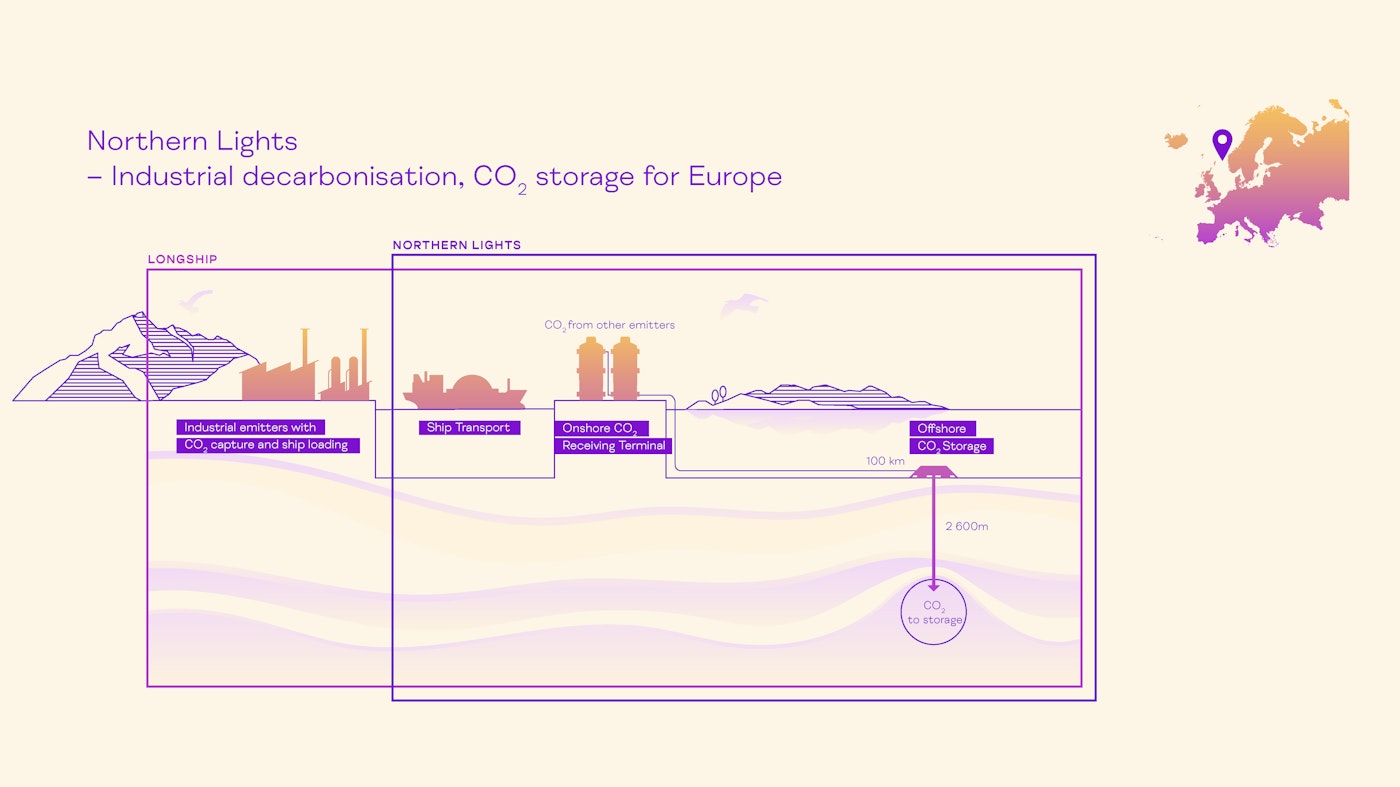Cite report
IEA (2021), CCUS around the world in 2021, IEA, Paris https://www.iea.org/reports/ccus-around-the-world-in-2021, Licence: CC BY 4.0
Northern Lights

To be the first ever cross-border, open-source CO2 transport and storage infrastructure network
When it starts operations in 2024, Northern Lights will be the first ever cross-border, open-source CO2 transport and storage infrastructure network. It will offer companies across Europe the opportunity to store their CO2 safely and permanently deep under the seabed in Norway. The company is building two dedicated CO2 carriers and will ship captured CO2 to an onshore terminal on the Norwegian west coast and, from there, transport it by pipeline to an offshore subsurface storage location in the North Sea. Phase one of the project will be completed mid-2024 with a capacity of up to 1.5 million tonnes of CO2 per year. The ambition is to expand capacity by an additional 3.5 million tonnes to a total of 5 million tonnes, dependent on market demand. However, the receiving terminal, offshore pipeline, and the umbilical to the offshore template will be built to accommodate the additional volumes. Both phases will offer flexibility to receive CO2 from European sources
Northern Lights is a partnership between Equinor, Shell and Total, and is a key component of Longship, the Norwegian Government’s full-scale carbon capture and storage project, which aims to capture and store approximately 0.8 Mtpa of CO2 by 2024 from a cement factory in Brevik and Fortum Oslo Varme, a waste-to-energy facility located in Oslo (subject to additional funding). The Longship project is a result of close cooperation between Gassnova, the state enterprie for (CCS), and the industrial partners. The Northern Lights partners finalised the design work and, along with the Norwegian Government, made positive final investment decisions in 2020.
The ability of Northern Lights to receive CO2 captured accross Europe means that it can play an important role in meeting not just Norway’s ambitious climate goals, but those of the entire region. It is linked to plans for at least nine potential capture facilities across Europe, including four cement factories and a steel plant. Plans to equip these facilities with CO2 capture are unlikely to materialise in the absence of a potential CO2 storage solution, illustrating the valuable role of hubs with shared transport and storage infrastructure in accelerating deployment of CCUS.
Key metrics
|
Location |
North Sea and west coast of Norway |
|
Operation date |
2024 |
|
Retrofit or new |
New |
|
Storage capacity (Mtpa) |
Phase one: 1.5, phase two: 5 |
|
Sector |
Various |
|
Feedstock |
Various |
|
Primary storage type |
Dedicated |
|
Storage location |
Offshore |
|
Transport length (km) |
110 (from onshore receiving terminal) |
|
Transportation type |
Pipeline and ship |
Learn more about this project